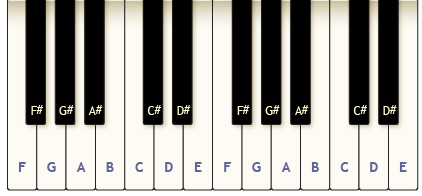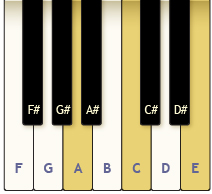Lesson 3: Combinations
Focus

iStockphoto/Thinkstock
In his book The Codebreakers: The Story of Secret Writing, David Kahn tells the story of how a New York City detective broke up a betting ring. The detective observed the bookie taking bets and writing them down. However, when the detective made the arrest, much to his surprise, the list did not consist of names and betting amounts. Rather, the list contained a series of musical notes.
Convinced that the notes must be a code, the detective took the list for cryptanalysis. Sure enough, when played, the notes did not result in beautiful music. The notes were a code! When broken, each code provided the identity of the person and the amount of the bet. The detective solved his case.
There have been other cases of music notes being used to deliver hidden messages. The code might be in the lyrics or within the notes themselves.
The piano is one of the most common musical instruments in the world. A typical keyboard has 88 keys with a repetitive naming sequence as shown in the following partial keyboard diagram. Keys with the same name, such as two A notes, sound similar, but one note is higher than the other.
A chord can be produced on a piano when more than one key is pressed at the same time. How can you determine the number of different chords a piano can produce? What if you want chords using only the white keys? Suppose the pianist’s fingers could only span eight white keys. How can you determine how many one-handed chords can be produced?

In Lesson 2 you examined permutations—the number of ways objects can be arranged when order is important. On the piano, the order in which a chord is written or played does not change the sound. ACE is the same as CAE since all keys are pressed at the same time in a chord.

In this lesson you will explore a method of determining the number of ways to select objects if the order is not important.
Lesson Outcomes
At the end of this lesson you will be able to determine the number of combinations of elements given certain criteria.
Lesson Questions
In this lesson you will investigate the following questions:
- What are the similarities and differences between permutation and combination problems?
- How are problems involving combinations solved?
- How do you solve equations involving combinations?
Assessment
Your assessment may be based on a combination of the following tasks:
- completion of the Lesson 3 Assignment (Download the Lesson 3 Assignment and save it in your course folder now.)
- course folder submissions from Try This and Share activities
- additions to Glossary Terms and Formula Sheet
- work under Project Connection